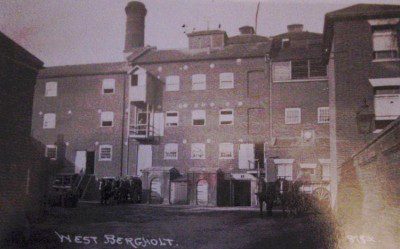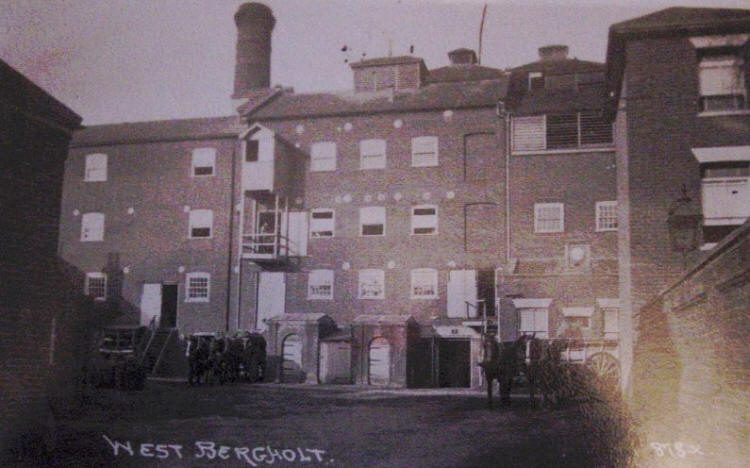Memories of the village in the mid-1930s

Those were the days when milk came in jugs. Most things revolved around the Brewery where many of the menfolk worked and also lived in the tied cottages. Nobody needed a clock as workers were summoned to their jobs by a hooter that sounded at various times during the day.
Children played ball games in the middle of the road especially cricket with wickets chalked on opposite gates. Traffic seldom stopped play but a lost ball or broken window pane often did.
Ash’s Shop
Ash’s shop had been a newsagents for many years and Mr Pitts the proprietor at the time used to ride a trade bike to the station early in the morning and push it back laden with papers for delivery.
Allotment rents were one shilling and ten pence to hire a ten rod plot for a year. Most men aimed to supply their families with vegetables during the winter months. (Mainly from necessity.)
Hardware replaced by Pharmacy
Where the pharmacy is now Mr. Digby had a hardware shop where anything from paraffin oil to nuts and bolts could be bought. Elmers the butchers was established before the turn of the century and the village had been served by several generations before it was recently sold to the Co-op. Where the Post Office is situated, Mrs. Fell had a sweet shop and many a Sunday School penny was spent on gobstoppers.
The Methodist Sunday School was held at the British School Room which is the present site of the hairdressing salon. Next door Mr. Ernie Long had a workshop where he repaired bicycles and charged accumulators for wireless sets.
Moss’s farm-house stood near the pond and a local doctor used to hire a room as a surgery. Patients had to wait outside until it was their turn. The Queens Head probably did extra trade on cold days.
Shops in Queen’s Road
There were shops in Queens Road. Mrs Duddy had a general store for many years and Mrs Crook had a small confectionery shop. This area of Chapel Road and Lexden Road was mainly fields with cattle grazing with just the odd house dotted here and there. Barrow’s farm-house and Donard Lodge were two such properties that were demolished to make way for new dwellings.
The wooden hut that preceded the scout building was the village community centre of the day. It housed a library, reading room and was the venue for the men’s club. The school on The Heath with its four classrooms and four teachers was classified as an Elementary School and pupils left at the age of fourteen.
A Plethora of Lost Businesses
Mr Pettican had a shoe repair business and gave a very necessary service before the age of synthetic materials.
At the cross-roads the smell of baking bread would waft from Clayden’s bakery. Nearby residents took their pies and cakes to be cooked. It was often the excuse for a warm by the hot ovens. Also in The Crescent was Mr Partridge’s undertakers and wheelwrights workshop.
In Colchester Road where the insurance office and Mr and Mrs Brown’s B&B is situated was at that time the Post Office with a red phone box outside. Mr Reg Clayden was the Postmaster and his sister ran the haberdashery counter.
There were two more butchers a Mr King and Mr Raven. Behind the Treble Tile, Mr Cardy worked a smallholding and sold his produce round the village by pony and cart.
Heath’s garage ran a bus service into Colchester several times a day. The buses were fourteen seaters and nobody bothered about bus stops. The drivers would pick up anywhere.
If walking round and about Mr Moss could have been seen delivering sacks of coal. He used to call out “half or a whul-un” because not everyone could afford a whole hundred-weight.
Mr Byford might have been pushing his hand-cart with the milk churns on board. He always called “milk-e-oh” and the women brought their jugs to the door to be filled. Also Mr Ernie Southernwood would be going door to door with his basket of freshly baked bread.
A nostalgic memory of an idyllic bygone era. Or was it? Just maybe through the eyes of a child.
by long-time resident Joyce Lucking
Village Bulletin – Issue 84,
December 2000


